Styrofoam is a material we encounter so often without even thinking about it whether we’re unpacking a new appliance, grabbing takeout, or insulating a building. We rarely stop to consider its environmental impact once we discard it. Lightweight, cheap, and useful, Styrofoam has become a modern convenience. However, with that convenience comes hidden environmental costs that affect both our local Colorado communities and the nation. These long-term consequences are increasingly impossible to ignore.
What is Styrofoam, Really?
Although most people use the term “Styrofoam” for all foamy plastics, it refers to a trademarked brand of polystyrene foam used mainly in building insulation. The material we see more commonly in packaging and disposable food containers is called expanded polystyrene (EPS), a petroleum-based plastic. Its insulating qualities and durability make it ideal for the shipping and food service industries. These same properties make it environmentally harmful once it becomes waste.
EPS, like most plastics, doesn’t biodegrade. Once discarded, it can linger in the environment for up to 500 years. Though it’s lightweight, its bulk means it takes up a disproportionate amount of landfill space. In some landfills, EPS can account for up to 30% of the total volume. Recycling efforts, when available, can ease this burden.
From Landfills to Waterways
However, the environmental concerns don’t end there. Over time, especially when exposed to sunlight, EPS breaks down through photodegradation, crumbling into tiny particles that become microplastics. These fragments are nearly impossible to clean up and can contaminate soil, air, and water. Styrofoam’s light, buoyant nature also makes it highly mobile. It’s easily carried by wind or water into rivers, lakes, and eventually the oceans. Marine animals often mistake it for food, leading to internal injuries, starvation, or even death. Additionally, as EPS breaks down, it can release chlorofluorocarbons (CFCs) greenhouse gases that contribute to ozone depletion and climate change. Some experts estimate that about 3% of atmospheric CFCs originate from Styrofoam-like materials.
This issue is particularly pressing here in Colorado, where the Colorado River begins its 1,450-mile journey near Grand Lake. The river supplies water to 40 million people and irrigates 5.5 million acres of farmland, including 15% of U.S. agriculture and 90% of the country’s winter vegetable crops. Protecting this water source from pollutants like microplastics must remain a top priority, both locally and nationally.
Colorado's Solutions and Sustainable Alternatives
While recycling is often encouraged as a solution, the reality is a bit more complex. EPS can technically be recycled, but the process is labor-intensive and costly. The material must be cleaned, shredded, melted, and reformed into pellets. Due to its lightweight and bulky nature, transporting and processing EPS is rarely cost-effective, which is why most municipal recycling programs don’t accept it.
Fortunately, there’s good news for our community in Eagle County. The town of Avon recently received a Colorado Recycling Resources Economic Opportunity grant from the state’s Department of Public Health and Environment. This funding supports a local initiative to recycle polystyrene and keep it out of the Eagle County landfill in Wolcott.
The program accepts clean, white foam packaging from electronics, furniture, appliances, and coolers. The foam must be dry and free of tape, dirt, and labels. Items not accepted include food containers, packing peanuts, colored foam, and insulation. The Styrofoam densifier is located at 375 Yoder Avenue, just past Home Depot at the Avon Recycling Drop-Off Site. The drop-off bin is open all day and night, year-round.
Beyond recycling, more sustainable alternatives to Styrofoam are becoming available. Packaging made from cornstarch, sugarcane, or mushrooms is biodegradable and much less damaging to ecosystems. In construction, recycled cellulose and soy-based insulation foams are gaining traction. By supporting these innovations and embracing a circular economy, we can reduce our environmental footprint.
As individuals, our everyday decisions have a significant impact. Bringing reusable containers for takeout, avoiding Styrofoam-packaged products, and choosing secondhand electronics can reduce packaging waste. If you do receive foam packaging, check with local UPS stores or shipping centers that may accept EPS for reuse or recycling. You can also repurpose clean foam for moving or storage.
Advocating for broader change is another meaningful step. Colorado’s Plastic Pollution Reduction Act already bans polystyrene food containers, but many other EPS products remain unregulated. While Styrofoam may offer short-term convenience, its long-term costs are far too great to ignore. By making informed, responsible choices, we can reduce pollution, conserve landfill space, and protect the natural resources that sustain our communities and future generations.
Elena Ziskind is a Sustainability Intern at Walking Mountains.






